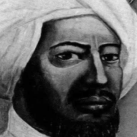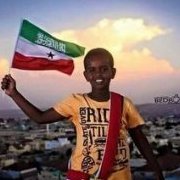Search the Community
Showing results for tags 'kenya'.
Found 10 results
-
Maamulka Jubaland ayaa soo saaray go’aano amni oo lagu soo rogay magaalada Kismaayo laga billaabo caawa iyo illaa inta ay ka dhaceyso doorashada madaxweynaha Jubaland ee 22-ka bishan. Go’aannada ayaa waxaa ugu weyn in lagu dhowaaqay in laga bilaabo 6pm makhribnimo 20/08/2019 ilaa 23/08/2019 la xiray xudduudaha magaaladda Kismaayo ee cir, dhul iyo bad. Shir ay isugu yimaadeen guddiga amniga Dowlad Goboleedka Jubbaland ayaa sidoo kale lagu dhowaaqay in heegan la geliyey dhamaan qaybaha kala duwan ee ciidamadda Dowlad Goboleedka Jubbaland iyo kuwa xoogga dalka kuwooda ka howl gala magaaladda Kismaayo iyo nawaaxigeeda. Guddiga ayaa sidoo kale faray hay’adaha amniga Dowlad Goboleedka Jubbaland, ciidamadda AMISOM, maamuladda garoonka diyaaradaha Kismaayo, dekadda Kismaayo iyo baraha kantarooladda laga soo galo magaaladda Kismaayo inay xaqiijiyaan meel maridda go’aankaan My kikuyu brothers are ready to diffend there own"
-
Documents reveal Britain made secret deal to defend Kenya in case of invasion by Somalia Britain made a secret undertaking in 1967 to defend Kenya in case of an invasion by Somalia, declassified documents recently released from the Prime Minister’s office in London reveal. The deal, known as the “Bamburi Understanding”, was a reassurance following a non-committal statement made by Mr Duncan Sandys, the British Secretary of State for the Colonies, in 1964. Without making any concrete commitment, Mr Sandys had told Kenya’s new government that in case of an attack by Somalia, it was probable that Britain would intervene. Somalia, which was then considered to have one of the region’s most powerful armies equipped with sophisticated Soviet-made weapons, had threatened to annex the north eastern part of Kenya in pursuit of its Greater Somalia policy. President Jomo Kenyatta’s administration had since independence in 1963 been grappling with a secessionist conflict in the north east, known as the Shifta War, that was supported by Somalia. Indeed, Somali Prime minister Muhammad Egal had told British MPs in 1962 of the intention to unite all territories occupied by Somalis in Kenya and Ethiopia When Somalia’s aggressive action seemed likely to lead to an invasion of Kenya in 1966, President Kenyatta quickly dispatched Attorney-General Charles Njonjo and Agriculture Minister Bruce Mckenzie to London to pressure the British government to not only give reassurances of protecting Kenya but also provide more sophisticated equipment. DECLASSIFIED DOCUMENTS According to the declassified documents, although the British government turned down the request for arms terming it “unrealistic”, Prime Minister Harold Wilson, in a private message to President Kenyatta, committed to consider protecting Kenya from Somalia’s aggression. This private message marked “secret” was what came to be known as the “Bamburi Understanding”. “If Kenya were the victim of outright aggression by Somalia, the British government would give the situation most urgent consideration. While the British government cannot in advance give the Kenya Government any assurance of automatic assistance, the possibility of Britain giving the Kenyans assistance in the event of organised and unprovoked armed attack by Somalia is not precluded,” the message read. Nine months after the “Bamburi Understanding”, a key diplomatic milestone was achieved when mediation spearheaded by Zambian President Kenneth Kaunda led to the signing of the Arusha Memorandum between Kenya and Somalia to end border hostilities. But the Somalia government, which had signed the Arusha Memorandum, was overthrown and replaced by a military junta led by General Siad Barre in 1969. This resulted in apprehension with senior Kenyan officials fearing that General Barre was more likely to revive and pursue the Greater Somalia ambitions actively. ANOTHER BLOW As if that was not enough, Kenya suffered another blow when the British Labour administration, which had made defence commitments through the “Bamburi Understanding,” was replaced by the Conservatives under Prime Minister Edward Heath in June 1970, creating further anxiety. This sudden turn of events forced President Kenyatta to send Mr Njonjo and Mr Mckenzie with a private letter seeking reaffirmation from the new British Prime Minister on maintaining the security understanding. “I have asked them (Mr Njonjo and Mr Mckenzie) to discuss with you what we now here call the Bamburi Understanding. I hope that you will kindly discuss this matter with my ministers who have my authority to do so. I am keen that the understanding should be continued with your government,” read the letter dated August 30, 1970 and signed by President Kenyatta. Mr Mckenzie, who was on sick leave in Britain, booked the appointment with the Foreign and Commonwealth Office (FCO) to deliver the letter to Number 10 Downing Street, the Prime Minister’s residence in London. The appointment was confirmed for September 8, 1970 at 11 am. A BRIEF Four days before the meeting, a brief was forwarded to Prime Minister Heath by the FCO warning that President Kenyatta was going to be unhappy if Britain refused to carry on with the “Bamburi Understanding”. The brief argued that Kenyans were among the most moderate on the “Arms for South Africa” issue — in reference to Britain selling weapons to the Apartheid government despite widespread opposition from many African countries — making it crucial for the new British government not to antagonise them. In the brief that was written in the context of the Cold War between the Western and Eastern blocs, the Prime Minister was also advised to raise British concerns with the Kenyan emissaries about the Soviet Union’s attempts to penetrate East Africa. There was also to be the clincher that the former colonial masters were willing to co-operate on the defence problem so long as British soldiers were allowed continued access to Kenyan military facilities. Biographical notes annexed to the brief further give insights on how the British viewed the two Kenyan ministers. Mr Njonjo was described as one of the closest and friendliest ministers to the British High Commission in Nairobi. Although he lacked political will or the grassroots support to win the presidency, he was viewed as a leading architect in the Kenyatta succession. ALSO INFORMED The Prime Minister’s office was also informed that Mr Njonjo loved to have mid-morning tea with hot milk but there should also be Indian tea with cold milk and Chinese tea with lemon. In their brief, the British officials, however, sneered that Mr Njonjo’s undoing in the Kenyan political context was that he was “obviously presenting a very Western image politically and personally even to the extent of a black jacket and striped trousers and a rose buttonhole daily”. On his part, Mr Mckenzie was described as a “dynamo of the Kenya Government machine” whose influence extended far beyond his Agriculture ministry. He was also described as a member of President Kenyatta’s inner circle who had gained the respect of the Kenyan European community with whom he previously had a difficult relationship. “But he always puts Kenya’s interest first. Tries to be genuinely non-aligned when it serves Kenya’s interests,” added the FCO brief. However, Kenya had a special request to make: It wanted Mr Njonjo’s presence in London and the existence of the “Bamburi Understanding” kept secret. Not even the Kenyan High Commissioner in London was supposed to know about the mission, according to a confidential letter from a Mr McClauney of the FCO to the Prime Minister’s office. STATEMENT RELEASED Mr McClauney, however, advised that if Mr Njonjo’s visit leaked, a statement should be released that he had brought a personal message from President Kenyatta and that it was not the practice to disclose the contents of such messages. And if the media assumed that the subject of the meeting was selling arms to South Africa, then this assumption should be allowed to stand. The secrecy of the meeting was emphasised to Prime Minister Heath by the British Secretary of State: “While I understand that you wish in general for publicity to be given to your discussion with African and other Commonwealth leaders, we feel that in this case it would be right to respect the Kenyan request, in so far as we can do so without appearing disingenuous.” Arrangements were, therefore, made for Mr Njonjo and Mr Mckenzie to enter the British Prime Minister’s office through the Cabinet office instead of the main entrance to avoid public attention. During the meeting, the declassified documents indicate, Mr Mckenzie pointed out the importance of reaffirming the “Bamburi Understanding”. In return, the British forces would be free to continue using Nairobi Airport, the Mombasa port as well as military training facilities in Kenya. They also had great interest in retaining the British special forces who were training Kenya’s General Service Unit commandos and the Special Branch. The visiting ministers linked the work the British special forces were doing in Kenya to the security arrangement against Somali’s aggression. NOTHING WRONG In response, the British Prime Minister said that in principle he saw nothing wrong in reaffirming the “Bamburi Understanding” but promised to have the issue fully considered and a reply sent to President Kenyatta. Prime Minister Heath also promised to consider the request to have the special forces remain in Kenya and pointed out his government did not wish to reduce the use of Kenyan military facilities by British troops. He, however, warned that British military resources were stretched at the time because of instability in Northern Ireland. But the discussions went beyond defence matters, according to the documents. Mr Njonjo and Mr Mckenzie also discussed development and diplomatic issues. For example, they said that while they appreciated Britain’s support, there were problems with the administration of the aid programme since conditions laid down by the previous Labour government were inflexible, projects were delayed and important payments also held up longer than necessary. Mr Mckenzie suggested it would be helpful if Kenya’s Finance minister Mwai Kibaki, who was at an International Monetary Fund meeting in Copenhagen, passed through London to meet the British minister for Overseas Development. SPECIAL INTEREST The two also felt that Kenya no longer enjoyed close contacts with British government officials and urged Prime Minister Heath to ask one of his junior ministers to take a special interest in Africa and get to know the continent’s leaders personally. Following the meeting, British officials embarked on drafting the Prime Minister’s reply. But they also secretly noted Mr Mckenzie’s and Mr Njonjo’s ignorance on the “Bamburi Understanding” for linking it to the presence of British special forces and access to Kenyan military facilities. While the arrangement for British forces to use Kenyan military facilities, airports and harbours was agreed upon at independence with Mr Sandys, who was the British Secretary of State for the Colonies, and the training of the GSU commandoes came into existence in December 1964, the “Bamburi Understanding” was in January 1967. But British Foreign Secretary Sir Alec Douglas-Home did not think it was worth getting into an argument on the three issues in the Prime Minister’s letter to President Kenyatta. IN EXISTENCE As late as May 1981, the agreement was still in existence, according to a brief prepared for Margaret Thatcher, the first female British Prime minister (1979-1990), when she met Kenya’s then Foreign Minister Robert Ouko in London. “Kenya has our friendship/support. Kenya policy to stand on her own feet militarily is right. We will continue to help Kenya absorb new equipment,” said the brief. It added that in case Somali attacked Kenya “UK would give all help it could, but it is unlikely our response could include commitment of combat troops. Nor indeed do we suppose that Kenya would wish for this.” Ironically, despite the fears in the 1960s, it was the Kenyan Defence Forces that would go into Somalia decades later, in October 2011, to pursue al-Shabaab terrorists. The Kenyan forces are now part of the African Union Mission in Somalia that is trying to restore security in the country that has been grappling with civil war since the collapse of the Barre regime in 1991. Link: https://www.nation.co.ke/news/documents-britain-secret-deal-defend-kenya-invasion-somalia/1056-3497398-yd1tasz/index.html
-
US ‘to help Kenya’ fight Al-Shabaab 19th May 2018 John Snow Featured, Kenya 0 MOGADISHU, Somalia – The United States has pledged to help Kenyan government “take on Al Qeada linked Al Shabaab group,” President Donald Trump’s top diplomat Mike Pompeo. Mike Pompeo delivered a message by Donald Trump to Kenyan President Uhuru Kenyatta during a phone call, according to Spokesperson for the US Department of State, Heather Nauert Nauert says US Secretary of State, Pompeo had thanked Kenyatta for his leadership in calling for an important national conversation to move the country forward following the 2017 election. “Mr. Pompeo and Kenyatta have discussed our shared goals of countering terrorism, promoting regional stability”, she said. Nauert says United States was providing assistance to the Kenyan government, and will continue to partner with them as well as with others in the region to take on the terrorist group Al-Shabaab. The Secretary of State, Pompeo pledged more US support in the war against the Al-Shabaab both within Kenya’s borders and in Somalia, she said. The US has been trying to improve its diplomatic relationship and missions in Africa as US warplanes carried out several drone strikes targeting Al Shabaab and ISIL groups’ bases in south and central Somalia. Reporting by Abdirisak Mohamud Tuuryare from Mogadishu, Somalia
-
Mr Guelleh said Djibouti desires to strengthen its partnership with Kenya in developing the region and making it peaceful. Somalia peace He said Djibouti and Kenya are working together to make Somalia peaceful to ensure that the security risk that its continued instability poses to the region is eliminated. “We are in a troubled region where we are confronted by extremism and violence. That is why our militaries are in Somalia to help it regain stability because what happens in Somalia has an immediate impact on all of us,” said President Guelleh. He said Djibouti, like Kenya, is sincere in its desire to make Somalia peaceful. After the talks, President Kenyatta and President Guelleh, who arrived in the country on Tuesday, witnessed the signing of the agreements. The trade agreement will open the door for more business between Kenya and Djibouti as it will act as a facilitation mechanism. “The parties, for enhancing and facilitating trade between the two countries, shall grant each other the Most Favoured Nation Treatment in all matters relating to trade,” says part of the agreement signed on Kenya’s behalf by Industry, Trade and Cooperatives Cabinet Secretary Adan Mohamed. Livestock sector In the bilateral cooperation in the livestock sector, Kenya will work together with Djibouti in expanding the livestock business sector. Kenya will tap the experience of Djibouti in unlocking the potential in business in the livestock sector especially in exports to the Middle East. The two nations will increase trade in livestock and livestock products. The agreement was signed on Kenya’s behalf by Cabinet Secretary for Agriculture Mwangi Kiunjuri In their desire to promote greater economic cooperation, the two leaders also oversaw the signing of an agreement which binds both nations to protect private or public investment in each country originating from the other. Cabinet Secretaries Monica Juma (Foreign Affairs) and Fred Matiangi (Interior and Coordination of National Government) signed the other two agreements. Deputy President William Ruto and Cabinet Secretaries attended the bilateral meeting with President Guelleh and his delegation. President Guelleh's visit comes hot on the heels of the two day State Visit by Ethiopian Prime Minister Abiy Ahmed Ali.
-
In the next two decades, Somalis will have overtaken the top three largest communities in Kenya to be the most populous group if the current population trends remain. The latest Household Survey shows that Somalis' families are at least one and a half times bigger than the average household in Kenya, and twice as much as the families in Nyeri, Nairobi, Mombasa and Kiambu counties. Wajir, Mandera and Garissa counties, which are home to most Kenyan Somalis, have between six and seven children on average, according to the Kenya Integrated Household Budget Survey (KIHBS), 2015/16. Wajir has the biggest families at 6.6 children per household, followed by Mandera 6.4 and Garissa 5.5 members per household. Other counties with bigger households are Tana River and West Pokot which have 5.4 people, on average, in every household. The survey was released by the Kenya National Bureau of Statistics (KNBS). “Relatively high average household sizes were recorded in arid and semi-arid counties (ASAL) of Wajir, Garissa and Mandera,” Mr Zachary Mwangi, the KNBS Director General said. Whereas some households in North Eastern have about seven members on average, households in Kiambu, Nairobi, Nyeri and Murang’a appear to be shrinking in sizes, helped by increased use of contraceptives, having more educated populations and the impact of urbanisation. “Those numbers are very factual and represent what is actually happening on the ground,” Aden Duale, leader of majority in National Assembly and the region’s top ranking Government official, told the Saturday Standard yesterday. Duale said that the North Eastern is largely dominated by Muslims and both their religion and culture prohibit family planning. “In 2009, people thought the numbers given were not genuine and even went to court. But this new report being released a year before the next census confirms that the numbers were correct,” Duale said. The survey ranks Nyeri County as having the smallest sizes of households in the country at 2.9 people on average per home. Nairobi and Mombasa counties have an average of three people each per home - that is a father, mother and one child, or one parent and two children. Largest community Kiambu, Kirinyaga and Murang’a counties, where most of Kenya’s largest community, the Kikuyu, come from, are also ranked among the six counties with the smallest households. “The average household size in rural areas was higher, at 4.5 members compared to 3.3 members in urban areas. Wajir, Mandera and Garissa counties recorded high average household sizes of 6.6, 6.4 and 5.5 members, respectively,” the report notes. All these are below the national average of 4 people per household. The KIHBS survey defines a household size as the number of persons living together in a household. “Nationally, the average household size was estimated at 4 members in 2015/16 KIHBS, which was a decline from 5.1 members reported in 2005/06 KIHBS,” the report notes in part. “Households with 1 to 2 members accounted for 31.6 per cent of all households,” the report adds. The findings support a previous report that ranked Central Kenya as the top county in usage of family planning, while the north Eastern region was hardly using any contraceptives. According to the Kenya Demographic and Health Survey 2014, the penetration of contraceptives in Central Kenya, which is home to Kiambu, Nyeri and Kirinyaga counties was at 73 per cent. This means that 7 in every 10 women in Central were using some form of family planning. On the contrary, in North Eastern region, only 3 per cent of their population, or 3 in every 100 people were using contraceptives. In the last census, population growth in North Eastern Kenya rose almost three-fold, from 962,143 in 1999 to 2.3 million in 2009. In Mandera, where the population boom was most pronounced, the numbers had quadrupled in a decade. Current projections show that Kenya has about 50 million people within its borders. The explosion of the Somali population caused tension in the 2009 census. Some of the results of the census especially that covered North Eastern region were partially cancelled by the then Planning Minister Wycliffe Oparanya, who is the current governor of Kakamega County. But the matter landed in court and was reversed. “The numbers from North Eastern region did not fit the normal population trends and that is why I rejected them,” Oparanya said. This is after it emerged that the population growth rates in the region deviated significantly from patterns noted in the rest of the country and in the respective neighbouring districts. The population in the north seemed to be growing fastest compared with other regions despite the fact that the area had fewer women. “My understanding at the time was that the region inflated their numbers to benefit from increased allocation of resources after devolution. Areas with bigger populations were to benefit from increased allocation,” Oparanya said. Since independence, Kenya’s biggest community has been the Kikuyu, which is now 17 per cent of the population or 6.8 million people as per the 2009 census. According to the National Cohesion and Integration Commission (NCIC), the second biggest group is the Luhya, which stands at 14 per cent of the population, at about 5.4 million people. The Kalenjin come third, making up 11 per cent of the population. Given that voters cast their ballots along these ethnic blocs, the larger communities have always had an advantage over the smaller ones whenever there is competition for power. “There are more than 42 ethnic communities in Kenya. Language and cultural background are the main criteria for ethnic identification in Kenya,” NCIC says in its report. The other big ethnic groups by size are Luo at 10.8 per cent and Kamba at 10 per cent. The Kenyan Somalis are now at position six and if they grow at the same pace as they have done in the last two decades, they will be in the top four. In the last census, population growth in North Eastern Kenya rose almost three-fold, from 962,143 in 1999 to 2.3 million in 2009. Saturday March 31, 2018 By Paul Wafula






